How to make a collection - The Classics
After having found my inspiration for the collection in Bilbao, I start to divide the inspiration into the frames of what the clothes from Mette Møller is all about. A collection must contain both old and new ideas. The new ideas will inspire and surprise, but will be received easier if served on a plate with something familiar.
When the inspiration is all set, I don’t dive into it, but circle around it. This is a well-known situation amongst creative beings. The work space is never as clean as it is at this point!
My best method of entering the working mood is to start making the classic knitwear. They’re always a big part of the collection and the changes from season to season are few. I collect all the classics I have ever made and make a selection. Some styles are very popular, so they got to stay on. Some styles may have been resting for a while, and deserves a comeback. Other styles may still need some work before it becomes the perfect cardigan or the ultimate dress. Comments both good and bad) and wishes from customers are taken in account. Also, the changes in time and fashion.
Timing is also important, even for classics. A break from the biggest hits is healthy, so you don’t mentally wear them out. To introduce a new classic shape must be done in small portions in a gentle way. It may linger for a couple of seasons, then suddenly it brakes and it’s the most wonderful item ever.
This is a selection of classics have made over the course of 12 years.
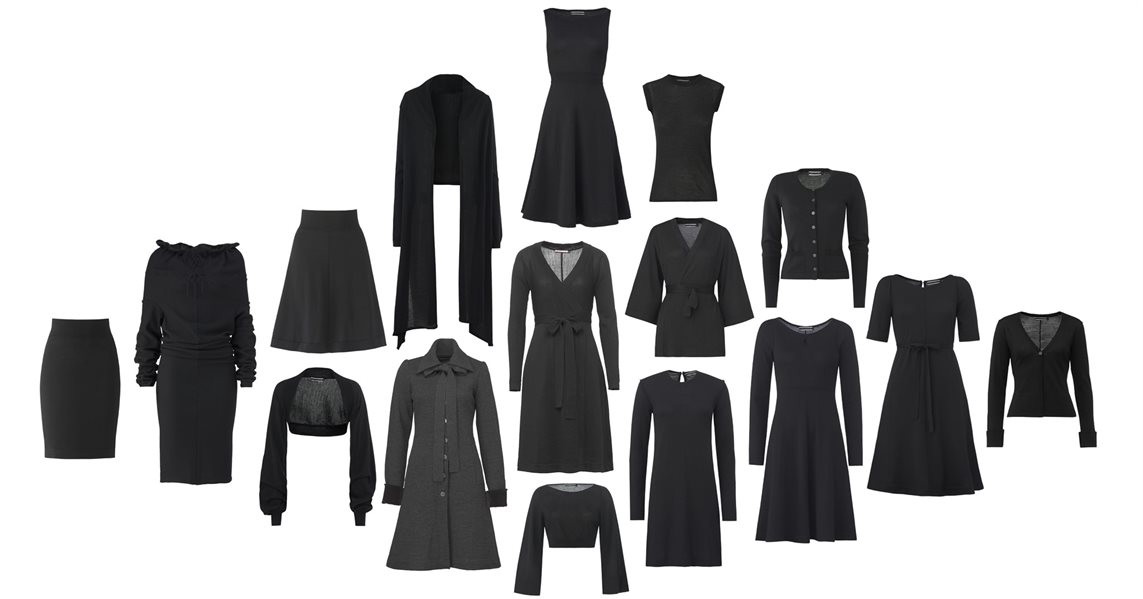
After I have chosen the classics, I chose the colors. This is the first small step into the new collection. I keep a firm grip with the one hand while I fumble after the next grip with the other hand.
The starting point of the choice of color are the three pictures from Bilbao. When I earlier hesitated to go ahead and use the inspiration, I have no problems with taking in all the new possibilities the colors give. At this point, I actually have to hold back ;)
From each picture I choose 3 base colors. They must have their own identity, represent the character of their picture, but also match the base colors from the two other pictures. To keep the wholeness of the collection is very important.
After the selection, I have a dark color line - Erosion, which are variations of black. Lots of people wear black, but an equal lot of people state they are tired of always wearing black. To give them a very dark color will make the transition towards color smoother. Also, in several working environments bright colors are not accepted.
The Misty color line brings light to the collection. These are more difficult colors to wear, but are good companions to most other colors. It softens the brighter colors and gives a sharp edge to the darker colors.
The Worker line gives the collection some juice.
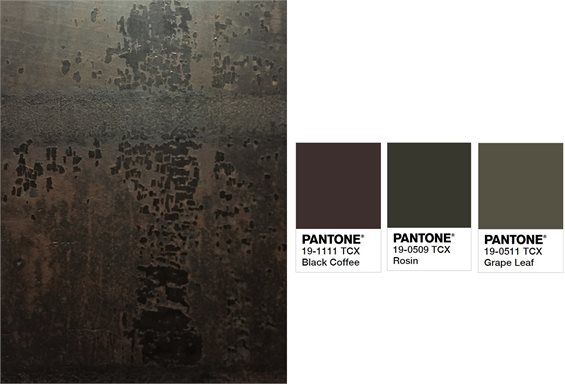
Yarn and material suppliers provide a color chart with their qualities. But sometimes their colors don’t match my needs. Then it’s possible to dye your own colors. Pantone is an international color-coding system. When I chose a color from this system, the supplier knows exactly what kind of color I want. The reference to the name is kept throughout the chain of production. This to avoid any misunderstandings along the way as there may be as many as 4 languages involved in the process.
So, this is why I have maybe unnecessary strange names on my colors.
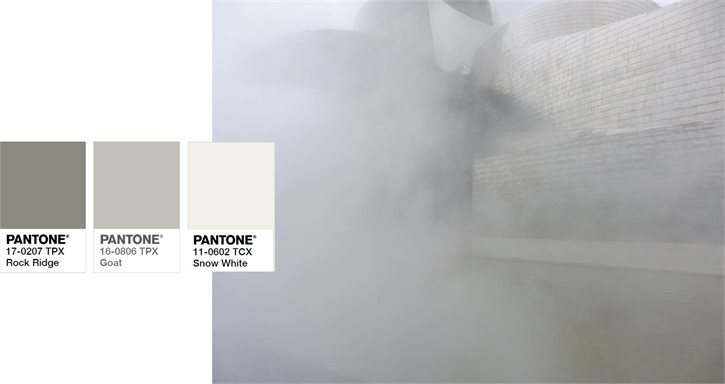
A small digression: When the first samples of knitwear arrived from the factory, I thought – Oh, no, - when I saw the initial orange color I had picked. It’s toned down but instead of being balmy and warm, it was dry and faded. This was not good. The Worker line needed to be juicy! Again, the color in itself may not be bad, but it would have diminished he the wholeness of the collection.
I needed to act fast because production was about to start at this point. I ploughed through the Pantone Colors again and found Mecca Orange. It was bright like chili and wasabi at the same time. It can be a challenge to pick the perfect color from the small knitted pieces from the color charts (15x15 mm). I felt the Mecca Orange would do the trick, but so did I with the first orange color as well, so nothing was certain.This color needed to be dyed, so when I received the lab dips for approval, it was an even bigger -OH, NO, - that entered my mind. It was very strong, and I was very uncertain... But it juiced up the collection like I wanted it to, reminding me that chili on it's own is too much, but it makes wonders for a chili-con-carne.
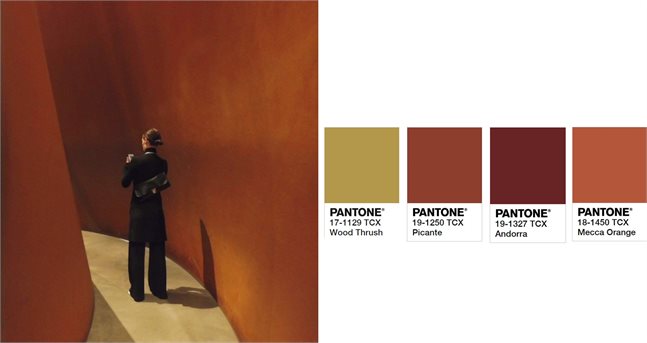
The coloring may start! Totally unnecessary, I color all the chosen items in all possible color variations only to eliminate 80% of them. To do this repetitive and practical work gets my head working with the whole collection. I’m very present in the simple task, and envision how to take on the rest of the collection.
Here are 4 classics before elimination:
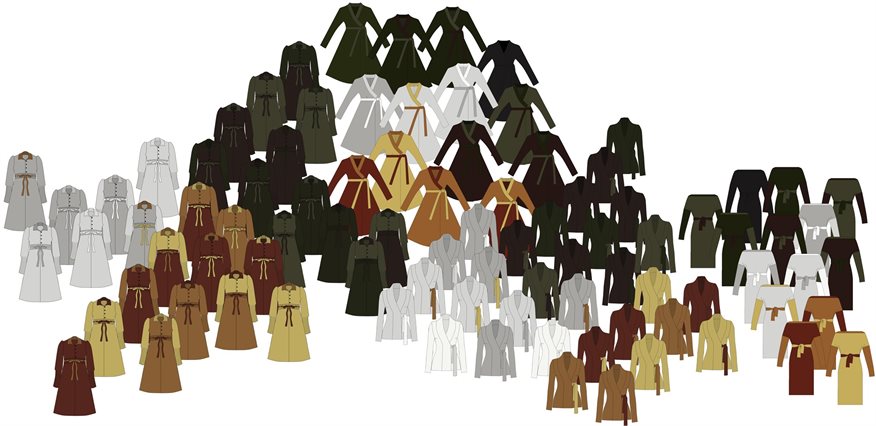
Below you can see the final cut of these 4 styles. The colors are selected by a set of self-made rules ;) All of the 3 color lines must be presented in the selected styles with 1 to 2 color variations. All the combinations must have their own distinct character so you don’t confuse the customer. In addition, the styles are also made in black as a hyperclassic.
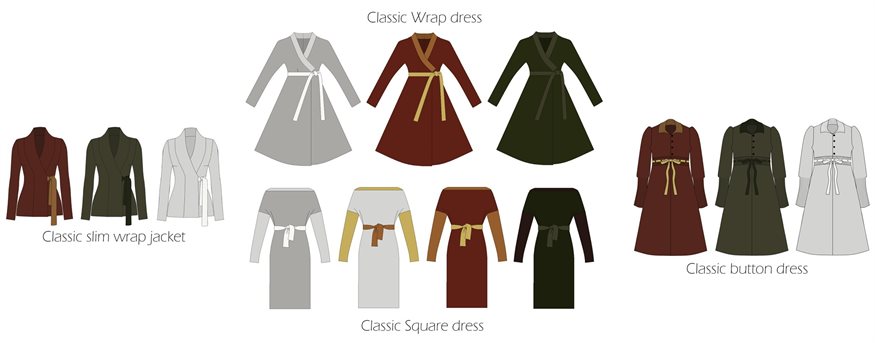
After the choosing of the classics, the colors, and the coloring I find myself well inside the inspiration bubble. A lot is done and a lot of fun remains. While my mind works on the second part of the collection which is much more demanding (the clothes I will make of the material which I have printed the 3 pictures on to) I shape the classics, make the patterns and documentation and sends it off to the knitting factory who will make samples and return to me for approval or further corrections. The wheel is set in motion.